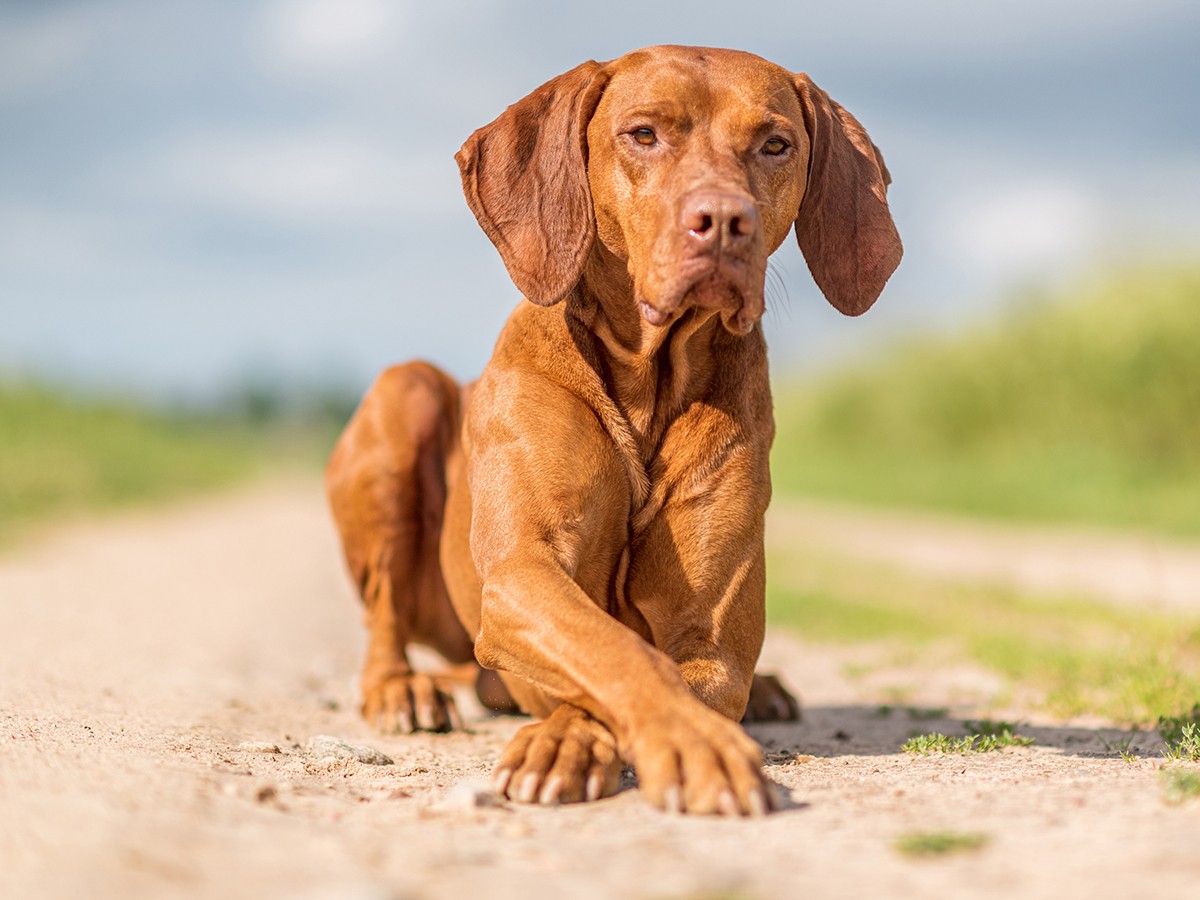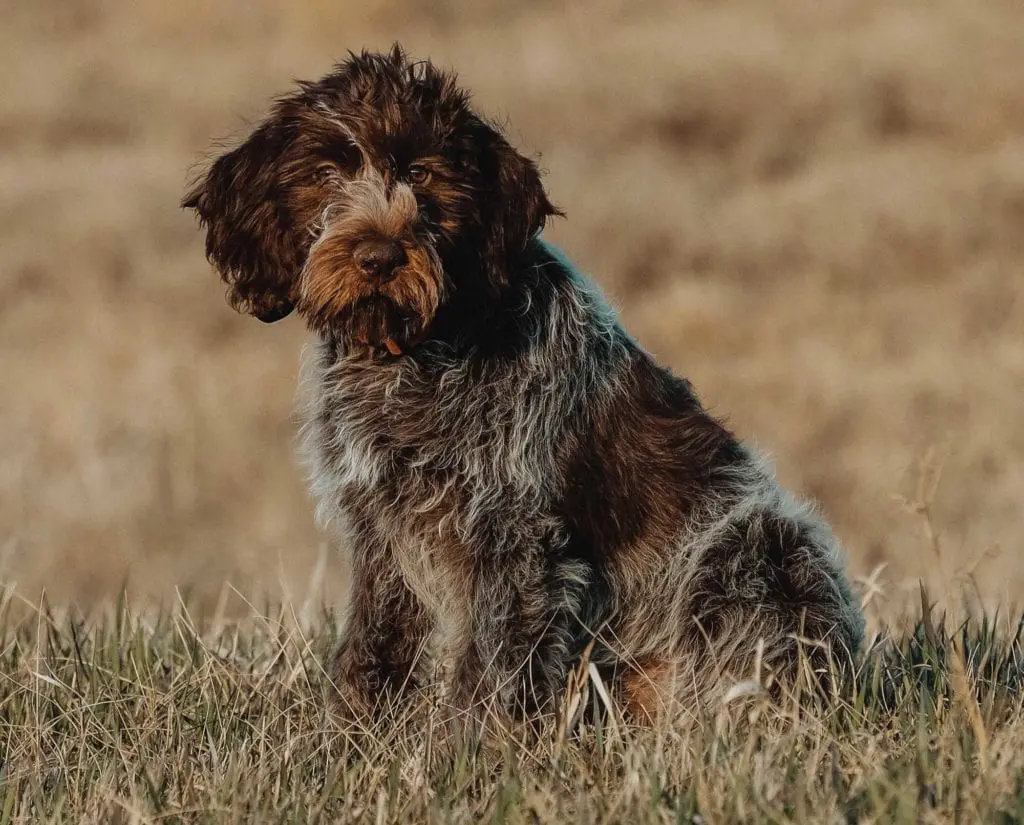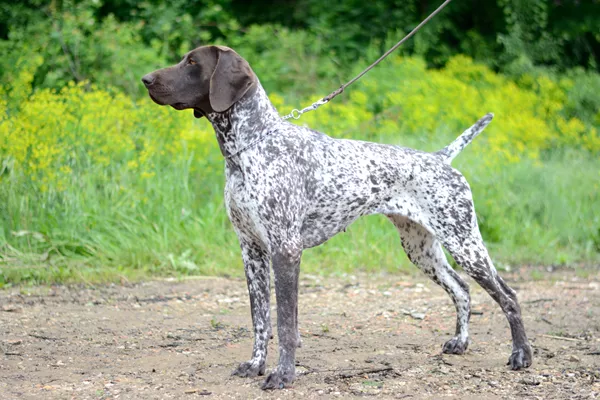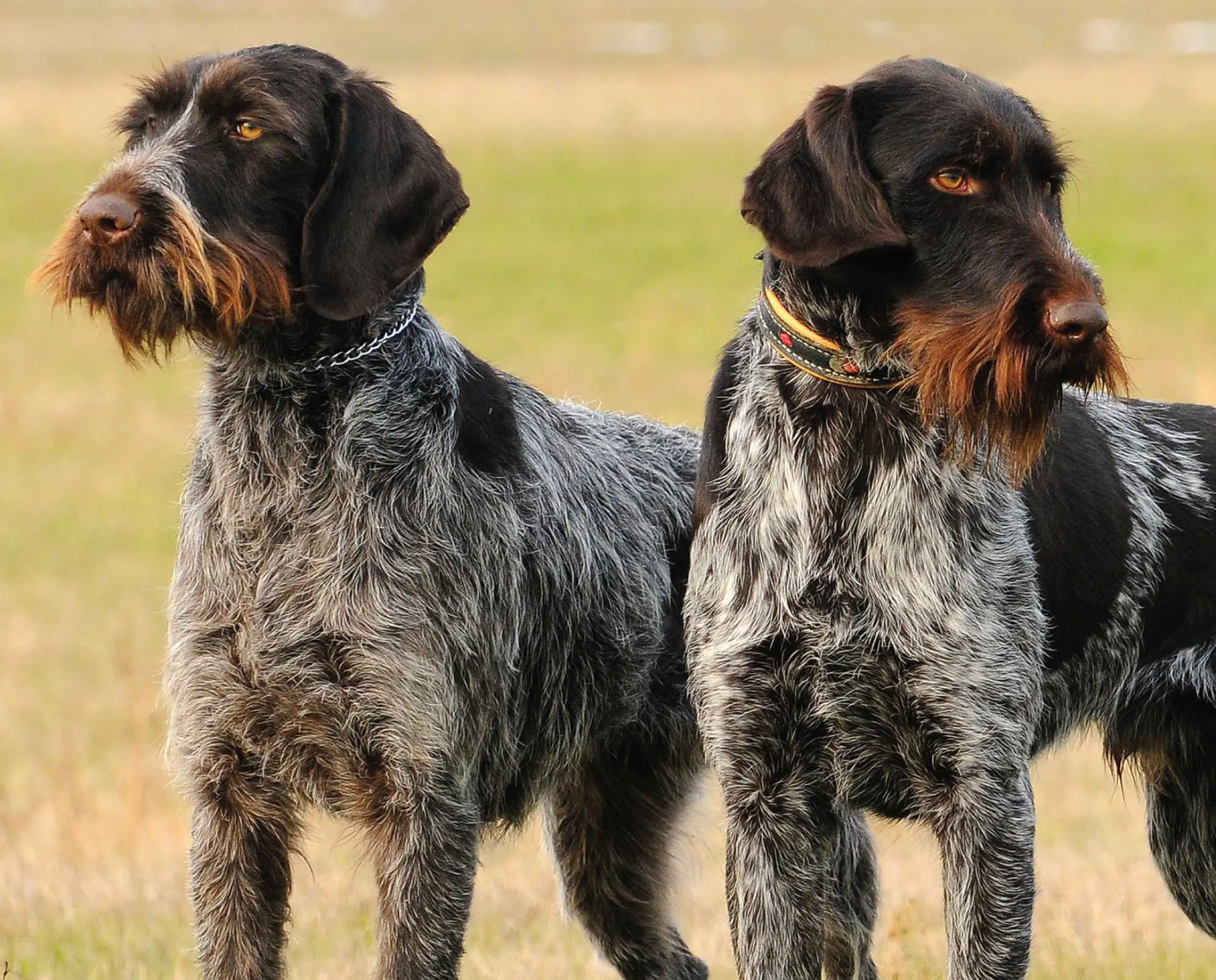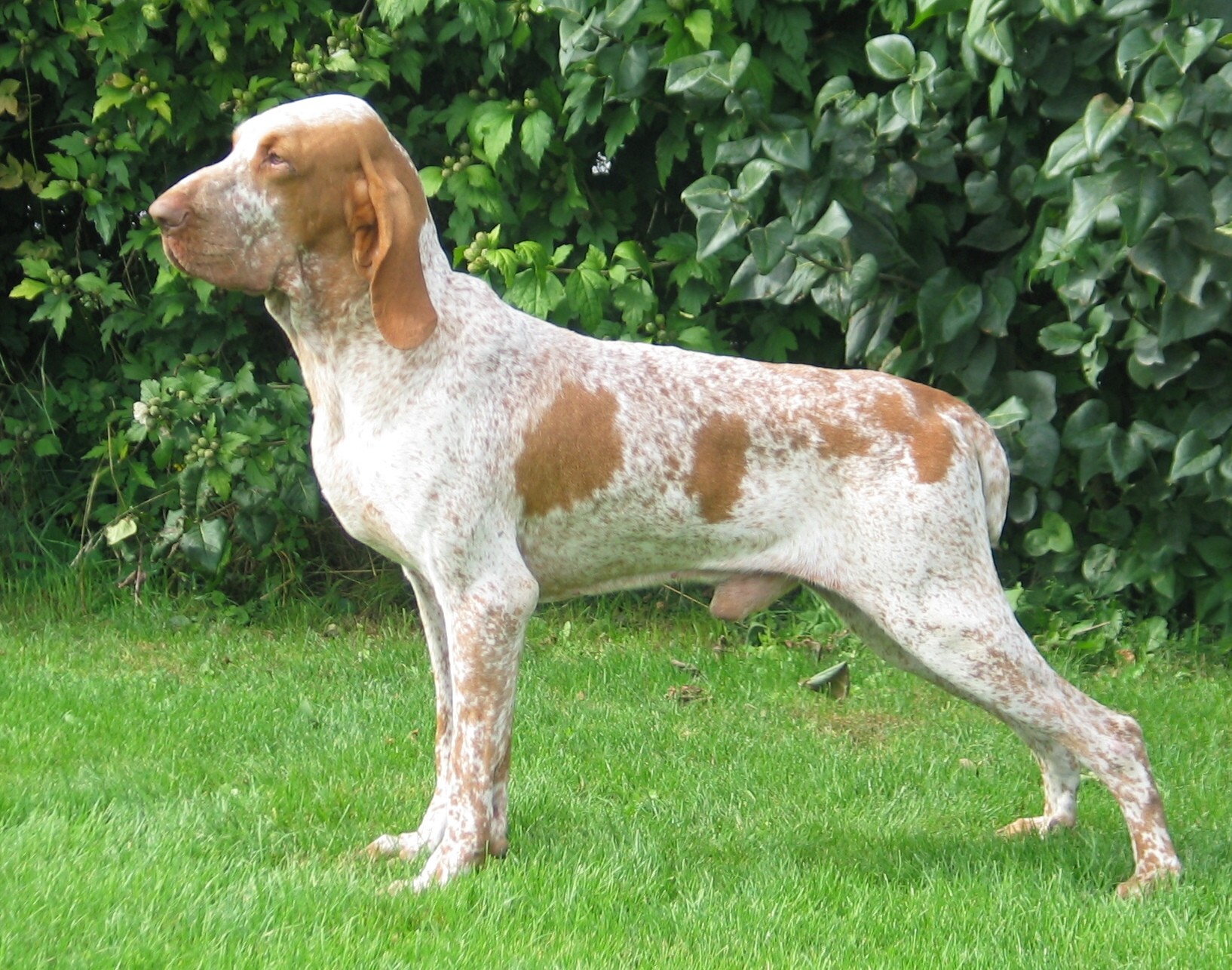Welcome to pawtrix.wiki, your one-stop location for everything about dogs! Today, we’re diving into the world of the Vizsla – an ancient Hungarian sporting breed that combines elegance, athleticism, and unwavering loyalty. With their distinctive golden-rust coats and expressive eyes, these versatile hunting companions have won hearts worldwide as both exceptional field dogs and devoted family members.
A Noble Hungarian Heritage
The Vizsla’s history stands out among sporting breeds for its remarkable longevity and connection to Hungarian culture. These dogs aren’t merely recent creations – they’re living artifacts of Hungarian history, tracing their lineage back over a thousand years.
Ancient Beginnings
The Vizsla’s story begins with the Magyar tribes who conquered the Carpathian Basin around 800-900 AD. These nomadic hunters brought with them yellow hunting dogs that were predecessors to today’s Vizsla. Early Hungarian artworks and writings reference these golden dogs, who hunted alongside nobility and commoners alike.
Royal Connections
Throughout Hungarian history, Vizslas were prized by royalty and aristocrats, particularly during the Middle Ages. The breed’s reputation for versatile hunting abilities and close-working style made them valuable companions for Hungarian nobility. Unlike many hunting dogs kept in kennels, Vizslas typically lived in the home with their owners, establishing the close human-canine bond that characterizes the breed today.
Near Extinction
The Vizsla’s journey nearly ended during the World Wars and subsequent communist occupation of Hungary. As lands were nationalized and Hungarian aristocracy dispersed, the breed’s numbers dwindled dangerously. Dedicated enthusiasts smuggled key breeding stock out of Hungary, establishing the breed in Austria, the United States, and other countries where they slowly rebuilt their numbers.
Modern Revival
Today’s Vizsla exists thanks to careful preservation efforts. The American Kennel Club officially recognized the breed in 1960, and they’ve steadily gained popularity for both their hunting prowess and family-friendly temperament. While still relatively uncommon compared to retrievers, their distinctive appearance and versatile abilities continue to attract devoted followers.
Physical Characteristics: Elegance Meets Function
The Vizsla’s appearance combines athletic functionality with unique elegance:
Size and Structure
- Males: 22-24 inches at the shoulder, 55-65 pounds
- Females: 21-23 inches at the shoulder, 45-55 pounds
- Build: Lean, muscular, and athletic without bulkiness
- Silhouette: Square profile with balanced proportions
- Movement: Smooth, ground-covering gait with light-footed elegance
The Golden Coat
Their most distinctive feature is their coat:
- Color: Various shades of golden rust (from light sandy gold to deep rust)
- Texture: Short, smooth, and dense without undercoat
- Markings: Solid colored (white markings on chest or toes permissible but limited)
- Maintenance: Minimal grooming requirements
Distinctive Features
- Eyes: Self-colored (matching the coat), often with a soulful expression
- Ears: Thin, silky, hanging close to the cheeks
- Tail: Traditionally docked to about two-thirds length where legal
- Expression: Alert, intelligent, and engaged
The Vizsla Temperament: Velcro Dogs with Heart
Vizslas possess a distinctive personality that separates them from other sporting breeds:
The “Velcro” Factor
Perhaps their most famous trait is their intense attachment to their people. These dogs truly earn their nickname as “velcro dogs” by:
- Following their owners from room to room
- Seeking physical contact at every opportunity
- Wanting to be included in all family activities
- Often sleeping under covers with their humans
- Experiencing genuine distress when separated
This clingy behavior isn’t a training issue – it’s hardwired into their breeding. Historically, Vizslas worked in close partnership with one hunter, establishing a bond that carried over from field to home.
Sensitivity and Intelligence
Beyond their attachment, Vizslas are known for:
- Exceptional emotional sensitivity to their owners
- High intelligence and problem-solving abilities
- Quick learning capacity with proper motivation
- Responsiveness to gentle training methods
- Strong desire to please their people
Energy and Playfulness
Vizslas maintain puppy-like energy and playfulness well into adulthood:
- Enthusiastic participants in any activity
- Natural retrievers who love fetch games
- Playful and sometimes goofy personalities
- Surprising bursts of energy (the famous “Vizsla zoomies”)
- Joy in physical activities of all kinds
With Family Members
Within the family dynamic, they typically are:
- Gentle and patient with children
- Protective without aggression
- Adaptable to family routines
- Eager to participate in all activities
- Deeply bonded with all household members
Exercise Needs: The Athletic Hungarian
The Vizsla’s sporting heritage translates into significant exercise requirements:
Daily Requirements
- Minimum: 60-90 minutes of vigorous activity
- Ideal: Multiple sessions combining physical and mental exercise
- Variety: Running, swimming, retrieving, scent games
- Mental stimulation: Training, puzzle toys, varied environments
- Off-leash time: Essential for full energy release
Warning Signs of Insufficient Exercise
Without adequate exercise, Vizslas may develop:
- Destructive behaviors (chewing, digging)
- Excessive vocalization
- Anxiety or nervous behaviors
- Difficulty settling indoors
- Hyperactivity and inability to focus
Exercise Ideas Beyond Walks
Vizslas excel at numerous activities:
- Running or jogging with owners
- Hiking in varied terrain
- Swimming (many love water)
- Dog sports (agility, dock diving, flyball)
- Scent work and tracking
- Fetch games with multiple retrieves
Training the Sensitive Athlete
Training a Vizsla requires understanding their unique personality:
The Vizsla Learning Style
These dogs typically:
- Learn quickly with proper motivation
- Shut down with harsh corrections
- Thrive on praise and positive reinforcement
- Benefit from clear, consistent boundaries
- Need variety to prevent boredom
Common Training Challenges
- Separation anxiety: Requires gradual conditioning to alone time
- Over-excitement: Needs impulse control training
- Sensitivity: Can become stressed with harsh methods
- Stubbornness: Occasionally tests boundaries
- Distraction: High prey drive can interfere with focus
Recommended Training Approach
Most successful Vizsla trainers focus on:
- Early socialization to different environments
- Positive reinforcement methods
- Short, engaging training sessions
- Incorporating play and movement
- Gentle correction with clear boundaries
Health and Care: Maintaining the Golden Athlete
Vizslas are generally healthy dogs with a life expectancy of 12-14 years. Their sensible breeding for function rather than extreme features contributes to their overall health.
Common Health Considerations
Health issues to monitor include:
- Hip dysplasia
- Epilepsy
- Hypothyroidism
- Cancer (various types)
- Eye disorders
- Ear infections
- Allergies and skin conditions
Day-to-Day Care
Routine care includes:
- High-quality nutrition appropriate for activity level
- Regular grooming (minimal but necessary)
- Ear cleaning (they can be prone to infections)
- Joint health monitoring for active dogs
- Skin check for allergic reactions
- Nail trimming and dental care
Living Arrangements
Vizslas adapt best to homes with:
- Secure fencing (they can jump and climb)
- Space for indoor movement
- Human presence most of the day
- Access to exercise areas
- Comfortable resting places near family
The Versatile Working Dog
True to their heritage, today’s Vizslas excel in numerous working capacities:
Hunting Abilities
As versatile hunting dogs, they:
- Point game birds with natural ability
- Retrieve from land and water
- Track wounded game
- Work at a closer range than some pointers
- Demonstrate excellent scenting ability
- Adapt to various hunting environments
Beyond Hunting
Their intelligence and athleticism suit them for:
- Search and rescue
- Therapy work (when properly trained and temperament tested)
- Detection (drugs, explosives, medical conditions)
- Agility competition
- Obedience and rally sports
- Dock diving and water retrieval
Family Integration: The Social Hungarian
Vizslas typically integrate well into active family life:
With Children
- Generally excellent with respectful children
- Gentle despite energy levels
- May be too exuberant for toddlers
- Often protective of “their” kids
- Need supervision due to exuberance
With Other Pets
- Usually good with other dogs
- Can live with cats when properly introduced
- May chase smaller pets due to hunting instincts
- Socialization from puppyhood helps tremendously
Home Environment
They adapt to various living situations if exercise needs are met:
- Suburban homes with yards: Ideal
- Rural properties: Thrive with space to run
- Urban settings: Possible with committed exercise routine
- Apartments: Challenging but doable with extensive daily outings
Two Distinct Types: American vs. Hungarian
Over the years, subtle differences have developed between Vizslas in different regions:
American Vizslas
- Often slightly larger and heavier
- Sometimes built more substantially
- May have darker coat colors
- Often bred primarily for companionship and show
- Still maintain hunting abilities but may be less field-focused
Hungarian Vizslas
- Typically leaner and lighter
- Often more intense field drive
- Usually lighter gold in color
- More commonly bred with working ability as primary focus
- May have higher energy and drive
These distinctions aren’t rigid, and excellent representatives of both types exist in all locations. Prospective owners should research bloodlines based on their intended activities with the dog.
Finding Your Vizsla: Making the Right Match
If you’re considering adding a Vizsla to your family, you have two primary options:
Reputable Breeders
Look for:
- Health testing for hips, eyes, and genetic conditions
- Temperament evaluation
- Dogs proven in field, show, or performance events
- Proper socialization practices
- Lifetime support for the dog
Questions to ask potential breeders:
- What health tests do you perform?
- How do you socialize puppies?
- What activities do you do with your dogs?
- What are the energy levels and temperaments in your lines?
- What support do you provide after purchase?
Vizsla Rescue
Consider rescue when:
- You’re open to an adult dog
- You understand potential adjustment periods
- You’re prepared for possible behavioral challenges
- You want to provide a second chance
Many Vizslas need rehoming when owners underestimate their exercise and attachment needs. Rescue organizations can often match you with a dog whose energy level and temperament fit your lifestyle.
Is a Vizsla Right for You?
The Vizsla is an exceptional breed but not suited for every household. Consider a Vizsla if:
- You want a devoted, people-oriented dog
- You lead an active lifestyle
- You can provide extensive daily exercise
- Someone is home most of the day
- You enjoy training and activities with your dog
- You want an elegant, athletic companion
Consider another breed if:
- You work long hours away from home
- You can’t provide daily vigorous exercise
- You prefer a more independent dog
- You want a dog that adapts to a sedentary lifestyle
- You’re away from home frequently
Living the Vizsla Life: Owner Perspectives
Experienced Vizsla owners share consistent observations about life with these distinctive dogs:
The Challenges
- “Personal space becomes a foreign concept.”
- “They really do need ALL that exercise you read about.”
- “Separation anxiety can be a real struggle.”
- “That short coat doesn’t mean they can’t shed!”
The Rewards
- “No dog is more devoted or loving.”
- “They make you laugh every single day.”
- “Having an exercise partner keeps you active.”
- “Their emotional sensitivity creates an incredible bond.”
Conclusion: Hungary’s Golden Treasure
The Vizsla represents a remarkable combination of ancient heritage and modern versatility. From Magyar hunting fields to today’s family homes, these golden athletes continue to exemplify the ideal partnership between human and dog.
Their distinctive appearance, unwavering loyalty, and athletic abilities have earned them devoted fans worldwide. Though not the breed for everyone, those who match well with a Vizsla’s needs often become lifelong advocates for these Hungarian treasures.
At pawtrix.wiki, we believe in matching the right dog with the right home. For active families seeking a devoted companion who’ll be involved in every aspect of daily life, the Vizsla offers a golden opportunity to experience one of dogdom’s most passionate and dedicated breeds.
Whether pursuing field trials, competitive dog sports, or simply enjoying the companionship of a truly devoted canine friend, the Vizsla stands ready to give their whole heart to the adventure – asking only for your time, exercise, and love in return.
